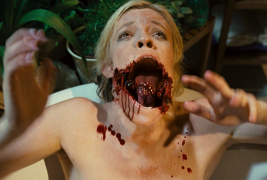
For those of you old enough to remember, there was a time—from about the mid-1970s through the 1980s—when our favorite movies’ special FX artists were every bit as important to us, if not more so, as those same films’ directors, writers, and stars. Their creations defined the era. Giant sharks, Imperial Walkers, American werewolves, iconic zombie disembowelments, graphic slasher slayings, and whatever it was that we all simply referred to as “The Thing” sparked an entire generation’s interest in making movies. A monstrous Mount Rushmore—Savini, Bottin, Baker, and Smith—and an army of other artists injected cinema with a tangible magic, for lack of a less nauseating cliché, and while we later learned to appreciate the Hitchcocks and the Spielbergs, it was the masters of splatter and makers of monsters who first made us fall in love with the craft of filmmaking.
The following generation’s FX artists were no less spectacular, but they traversed a much less forgiving landscape. Computer Generated Imagery became the industry standard in the early-1990s. It knocked practical effects from the limelight for a time and with it went the iconic, rock-star notoriety of its creators. Lucky for us, though—and genre cinema in general—FX artists like Jaremy Aiello didn’t disappear. In fact, he and many others were just getting started. As it became apparent that CGI alone couldn’t bestow quite the same magic to movies as the real-deal could, fans backlashed while Aiello and his fellow artists continued to create.
While technology has certainly changed genre filmmaking for better and for worse over the years, fans’ wishes have largely been granted. Today, most movies utilize a synthesis of both practical effects and computer generated imagery, and when it’s done well the results are stunning. Modern FX artists must ply their craft using that synthesized “language” and the aforementioned Jaremy Aiello is a progenitor of this new breed.
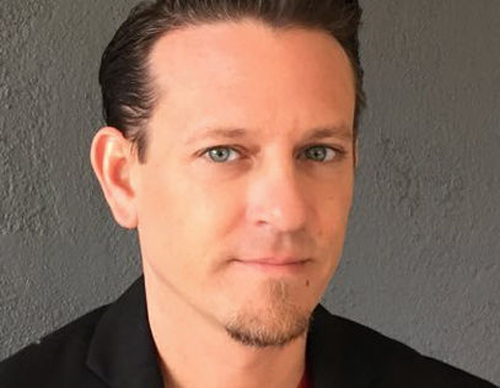
We caught up with Aiello—an Emmy Award-winning FX artist (The Walking Dead), and a twenty-plus year veteran of the industry, whose filmography looks like a genre best-of list—to talk about the current state of special effects, his humble beginnings, his career, and his process. Read on, Horror Fans….
RavMon: Your work runs the gamut—television, film, horror, sci-fi, big-budget, independent, etc. How did your journey in this industry begin?
Jaremy Aiello: I owe a huge percentage of the beginning of my journey to two lovely ladies named Sherri Short and Camile Calve. When I was 16 I lived up in Northern California, near Sacramento. I used to love to go to the California state fair and check out the “Industries of California” tent. Sometimes they would have displays from things that were built for Hollywood. One year they had a Make-up for Hollywood booth where I was fortunate enough to meet [Sherri and Camile]. They asked me if I’d like to have a makeup put on me and we had a blast. I came back several times and finally found enough courage to ask for their honest opinions of my artwork, at that time.
I really wanted to move to Hollywood to make monsters, but I also needed to know if I was any good. They told me to talk to a guy named Chris Biggs, who eventually asked me to work on a Megadeth music video for a week. After that, I never left L.A. Soon after, Chris and his business partner at that time—Richard Snell—started work on Star Trek 6 and hired me full time from there. I really had no idea how to contact anyone from the industry (this was all before the Internet), so I feel very lucky to have met these people and it’s because of them and many others I have much gratitude.
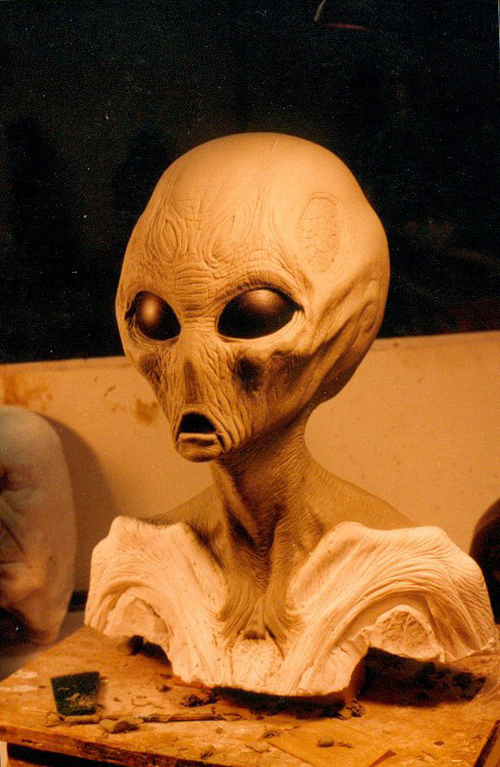
RavMon: My passion for horror movies—which led to my passion for film in general—started out as a fascination with the special effects and make-up of people like Tom Savini, Rob Bottin, and, later, the KNB guys. Who were the artists that inspired a young Jaremy Aiello to pursue this craft? Who inspires your work now?
JA: I can totally agree with you there; those guys are gods. But before I knew about make-up FX I’ve always loved art. Artists like H.R. Giger, Frank Frazetta, Brian Froud, Les Edwards, Bernie Wrightson, Francis Bacon, Sebastian Kruger, Theraminis Bach, Lee Bontecou, and my Dad just to name a few. I also remember seeing the making of the Thriller music video by Michael Jackson. When Rick Baker was explaining the process to the camera and they showed behind the scenes footage of the zombies hanging out and having fun, that’s when I said “this is for me.” After that I started to research the names of artists responsible for the creatures I love. Some of those names are Brian Wade, Steve Wang, Matt Rose, Jose Fernandes, Jim Kageal, Joey Orrosco, Norman Cabraria, and David Grasso. I feel very blessed to have worked with this list of great artists. There are so many more, but we would be here all day. Thank you to all of you.
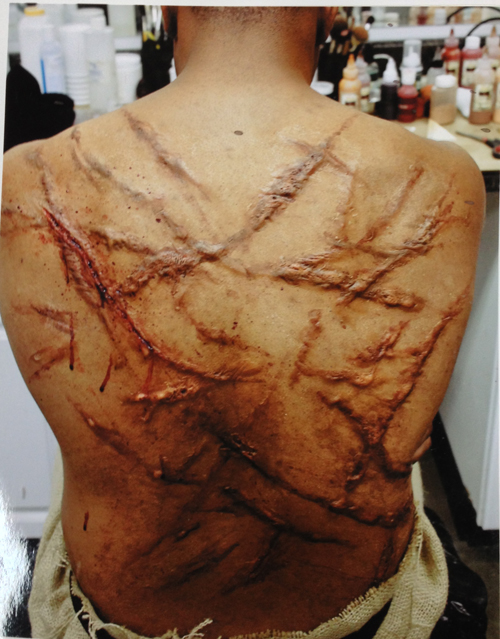
RavMon: I had that same reaction to the “making-of” doc for the Thriller video when I was a kid. That’s a pretty cool coincidence that your break came via a music video. But since then you’ve done an incredible list of Movies and TV. Do have a preference between film and television?
JA: I remember a time when we all would turn our nose up to the idea of TV; however, things have changed. TV has really stepped up their game. People like taking the time to get to know the characters and how they evolve. Plus, you can’t beat the steady work which is the hardest thing to find in this industry. Now, I’ll take work wherever it comes from. Sometimes our bottom line decides for us. So I guess the answer is, I have no preference.
RavMon: In broad strokes, could you describe your process for creating a character or a complex gag?
JA: First I will read the specifics of the gag or effect in the script. Then I would try to define what that looks like by communicating with the director or art department supervisors. There are so many different ways to achieve the same thing, however, it’s the end result that matters. I try not to over complicate things. I suggest the tried and true techniques that have worked in the past. I’m always open to new suggestions, but I think it can be a waste of time to try to reinvent the wheel on every project. Efficiency can be more or important than brilliance sometimes.
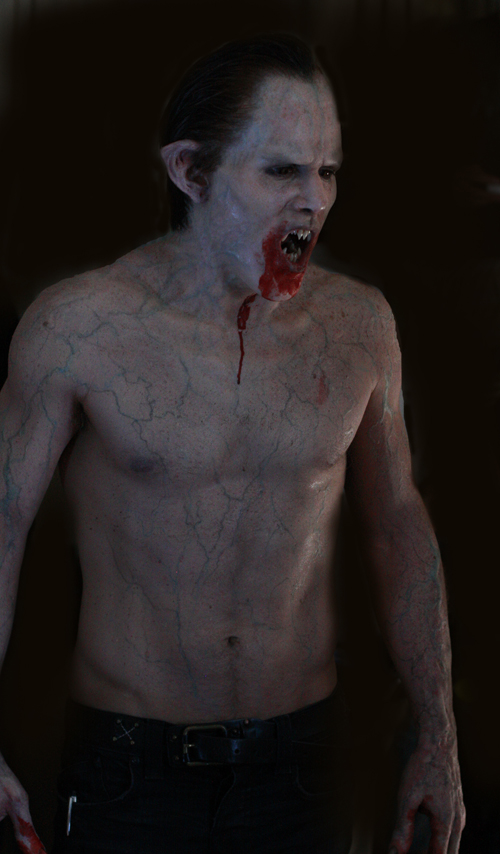
They usually let me know what to focus on. I’ve done so many different types of gags it’s hard to choose just one to talk about. Usually there are a couple of rounds in the design room and then once a design has been chosen, I will do a three-dimensional maquette, just to make sure we’re on the same page. A two-dimensional design can easily be misinterpreted because of all of the other angles we have to come up with. Or, it might be a great drawing, but is not so great a design when realized in three dimensions. That is why maquettes are of great value. You can make one for the director to keep so he can have time to absorb all of its qualities and figure out the best ways to feature it. It’s a great blueprint which helps keep everyone on track. I also believe story boards are a great tool. The first couple of years in the movie business I did storyboards occasionally. They work great if you stick to them.
RavMon: How do you approach satisfying the needs of your respective directors?
JA: Over the years I’ve learned to keep my ego out of it. I really like to deliver what they want instead of trying to convince them that they might want something different. I’ve watched some past employers do that and it seemed like it took its toll on them. I’m a pretty sensitive guy so the only way to survive in this town is to not take things personally. If they have no previous idea and want me to sketch something for them, I am more than happy to do so. I just know not to get offended if they don’t like what I did. Sometimes people have to see what they don’t want before they can figure out what they do. When I was younger I would work on designs for things for hours and hours and then when I presented them to the production they were dismissed in seconds. I then had to modify my approach as to not waste time. Many directors have manifestos with their images and references of what they want; those things definitely help. And if they don’t have something like that I will try to find things for them to spark their creativity.
RavMon: What’s your favorite style of FX work?
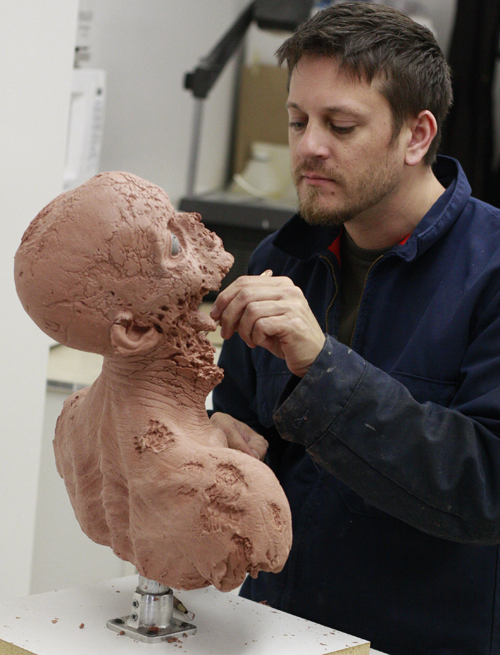
JA: I fell in love with the sculpture end of this business. I’ve done many different types of work from sculpting clay on life-casts of actors to making props like helmets, spacesuits, and guns and so on, to making huge set pieces. I pretty much made my living being a sculptor. Being on set can be very exciting, but I will always have a special place in my heart for the hijinks, the process, and the occasional all-nighter back at the shop.
RavMon: Of all the creations you’ve unleashed onto screens, big and small, which one are you proudest of?
JA: The first one to come to mind is the bad guy from the sequel to the Scooby Doo movie called Monsters Unleashed. I was in charge of creating the artwork for the “Evil Masked Figure” when I worked at Steve Johnson‘s Edge FX. The character wears a metal mask with articulated facial features. I sculpted the helmet and the gloves which were molded, cast in fiberglass, and then sanded really smooth so when they were chrome plated, they would be extra shiny. The helmet had around ten separate parts that all had to move around so [the actor] could emote with the mask.
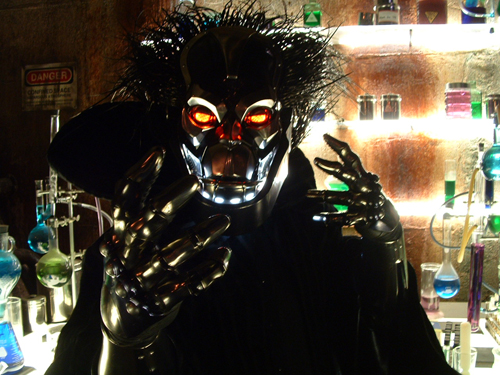
The gloves were the real challenge. Each glove had around thirty-two separate pieces which had to later be attached to foam latex gloves. It was super labor-intensive, but the end result was amazing. I wish I got to keep a pair. The face moved so great because Eric Feidler was the mechanical supervisor and he made the experience so much fun. He’s a genius and a great guy. It was heartbreaking when on the first day of shooting the stuff we made, I saw the actor who was wearing the gloves sitting on them chrome-sides down on the bed of a truck, jumping and stomping on them with his butt. Why was he doing this? They were beautiful! Why scratch them up before they’ve been filmed? I’ll never understand some people.
I’m also really proud of the sculpture of the china doll I did for Oz the Great and Powerful. Howard Berger told me that Sam Rami said it was the best three-dimensional interpretation of a design that he’s ever seen. It was later CG, but we made a marionette puppet which was used when filming. That comment made me feel warm and fuzzy inside.
RavMon: What was your most challenging creation?
JA: It was on a movie called Mirrors. In this film one of the characters pulls off her own jaw while naked in the bathtub. Also they wanted to do this all practically, no CG. I almost had a nervous breakdown. We can add anything to anybody’s face but we can’t take away! With many tests and a crazy plan, we flew to Romania and got the shots. Everyone was happy with what we did so that made it worth it. I learned a lot on that show.
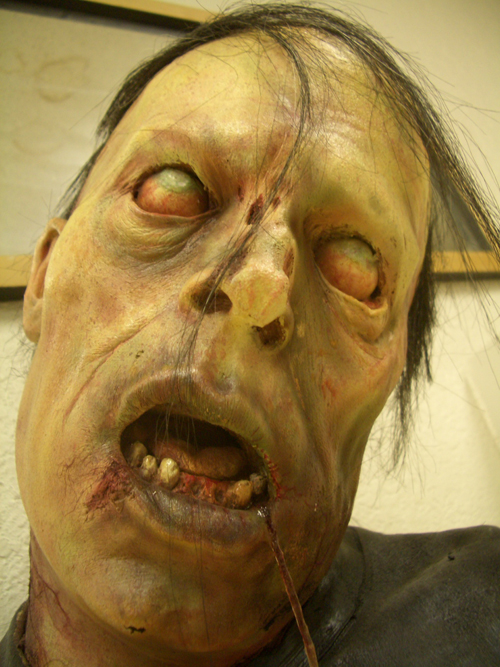
RavMon: Have you ever failed to pull something off, whether the reason was budgetary or otherwise?
JA: I don’t think I ever had a total “fail” when I worked for other people. Maybe that’s why they kept me around. I was fortunate enough to work with such amazing, talented, and caring people and we all had each other’s back. Nobody wanted to witness a failed effect. It made us all look bad. It could also be selective memory (Laughs).
RavMon: Describe the night you won an Emmy for your work on The Walking Dead.
JA: It was surreal. I was certain we would not win because of the subject matter of the show. If somebody told me we would receive an award of such magnitude for zombies, I would have told them they were crazy. It was a huge honor to be nominated so I rented a tux—which was way too big—and figured I’d just enjoy the sentiment. Next thing I know, the makeup category popped up and all I remember is them reading the noms, then suddenly my husband is pushing me out of my seat saying “Go! Get up there! They said your name!” I ran up there, all out of breath. I stood there with my peers and felt very proud as well as lucky for getting to work on such a great show but more importantly, I was part of a fantastic team where everybody was on top of their game. Thank you KNB.
RavMon: I’ve watched SyFy’s Face Off since its premiere, and while I enjoy it I often feel like the type of work the contestants are being asked to do isn’t necessarily applicable to what happens during the preproduction of a movie or even on the set of one. But I’m certainly not qualified to know for sure one way or another. What’s your opinion of the show?
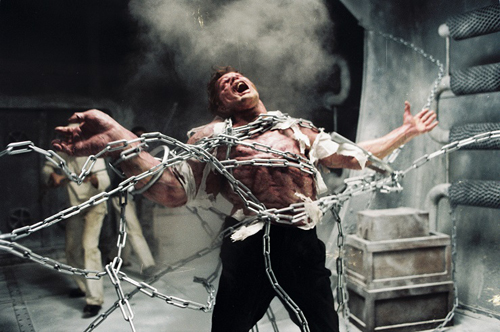
JA: I think the show is fantastic. I’ve always wanted to see a competition show like this and I think they are doing a great job of featuring all the various aspects of what we do. I am constantly amazed with what [the contestants] can come up with in such a short amount of time. I thought movie-industry deadlines were close to impossible and their deadlines on the show are even tighter.
That’s one thing I wasn’t prepared for when I got here—speed, but they have to create things from start to finish in a matter of hours. That’s impressive. I am also impressed by the talent they bring in to judge or guest judge. I’d be lying if I said I didn’t wonder how I would do on that show. It’s not the challenges I fear but the editing. Bravo (laughs)!
RavMon: What advice would you give someone who’s trying to break into this industry?
JA: Never stop. If it’s in your blood to do art for a living, you will. Document everything you do. People like to see a progression of your talent and skills. It shows that you can and are willing to learn. Be a better listener than talker. And, quite simply, don’t be a dick. The person you talk smack to today just might be your supervisor tomorrow. Not everyone gets a chance, so make sure you are ready for it when it comes. Most importantly, don’t be too hard on yourself. That’s what Hollywood is for.
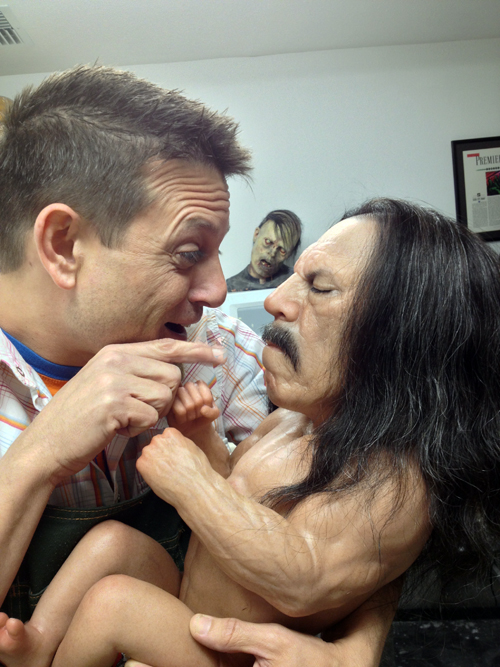
RavMon: Your credits begin right around the time CG became the industry standard. How has technology changed the FX industry since then and how has it changed your approach as an artist/craftsman?
JA: There has always been a secret battle between CG and “practical” FX. When I first got here most directors were a little cautious to use CG because of how expensive it was to actually make it look like the effect was in the same environment as the action on film. We used to work a lot closer with the visual FX department, but when CG got better, our coordination with each other’s departments grew more and more distant. I’ve always felt that the mixture of many mediums is what creates a great effect. I think CG has provided many options for filming an effect. With things like rod removal to enhancing subtle movements to compositing, a practical effect can be polished nicely using all the tricks of the trade. Every technique is welcome if it makes the end result look amazing.
It makes it a little more difficult to impress audiences these days because they’re used to seeing the impossible be possible because there are no limits with CG. There is something about the gravity of reality that makes a practical effect look more real to some audiences. The younger the person, the more CG seems to be more real than reality. The more computer generated imagery that is piled up in a young person’s brain, the more realistic CG seems, because of how our brain references the memories of what it’s experienced before. With things like high definition we all had to get a little bit cleaner and tighter with the detail of our sculptures. I’ve always been known for my close attention to detail so I welcomed the idea of seeing more with high def. It bummed me out when I would spend all night texturing and detailing the sculpture and then when I saw it on film, so much detail was lost. I think now all departments have a very good grasp of what my department can provide. I’ve always been a fan of all the possibilities CG can provide. It’s also great at getting rid of a lot of the limitations you would have by trying to hide stuff off camera or under something, etc.
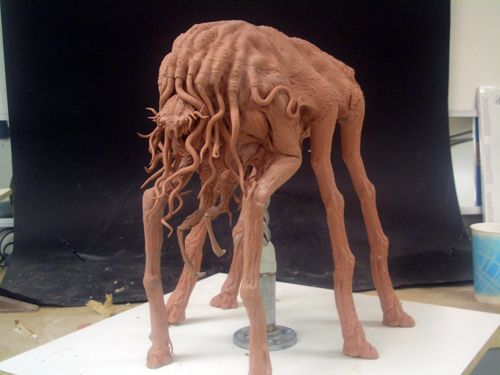
RavMon: What’s your dream gig?
JA: I’ve always been a huge Star Wars fan. Designing Siths would be a lot of fun. I think Hellraiser could use a redo. I loved the Cenobites. Working on other people’s visions for so long has only fueled my passion to do my own thing. An amazing actor, and my best friend, Nathaniel Harris and I are currently writing a script that I am super excited about. It’s kind of like Poltergeist meets Raiders of the lost Ark, meets Animal house. It’s called The One %, and there’s ton of monsters and demons in it.
My friend Rachel Madison Hill planted a seed in my head that I can’t stop entertaining. She said she wanted to see me have a gallery showing of my personal artwork. This was a childhood dream of mine that was forgotten. This idea has given me a new spark of life. Another thing for the bucket list.
RavMon: What are you working on now?
JA: Currently, I am building things to bring to some of the conventions I will be attending. Each convention I do I will be making a new limited-edition mask for sale as well as other merchandise. I am also trying to make time to complete more personal artwork which seems to be the toughest thing to get to lately. The two films I co-produced in 2015 will be coming out later this year. Sleight and Carnage Park both of which were at Sundance and Carnage Park was also at SXSW. I’m very curious to see how they do. Of course, I hope they do well because I want to keep making more.
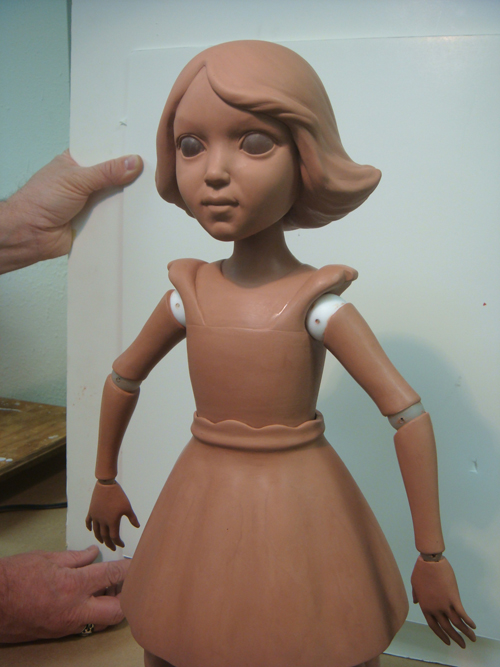
RavMon: What makes you tick outside of the special FX industry?
JA: I definitely try to stay busy when I’m not working on films. I am a giant fan of electronic music. That love probably stems from great soundtrack composers like Vangelis, Brad Fediel and John Carpenter. I loved bands like Skinny Puppy and Dead Can Dance because of their atmospheric, scary-movie influences. I dabble in creating music as well. In fact, in the early ‘90s my friend Mike Mullen and I created some ambient music that was later sold to the Killer Tracks music library and is licensed still to this day for film and TV. Time seems to speed up when I make music because I enjoy it so much. I trained my hands for a different type of artwork so I am not an amazing pianist. However, with the help of computers I can achieve a sound that I probably wouldn’t have been able to before. The less complicated things are to program, the more the brain is allowed to be free to create, instead of being bogged down with technical jargon.
I’m also always working on the next big idea. Everything can be improved on. It just takes that one great idea that can change the way we go about things. Even if it’s as simple as a new way to wipe our butts, a better solution to an everyday problem is always on my mind. If I can convince the world it needs something I created, I am closer to being relevant to humanity. Thank you for the opportunity to talk….
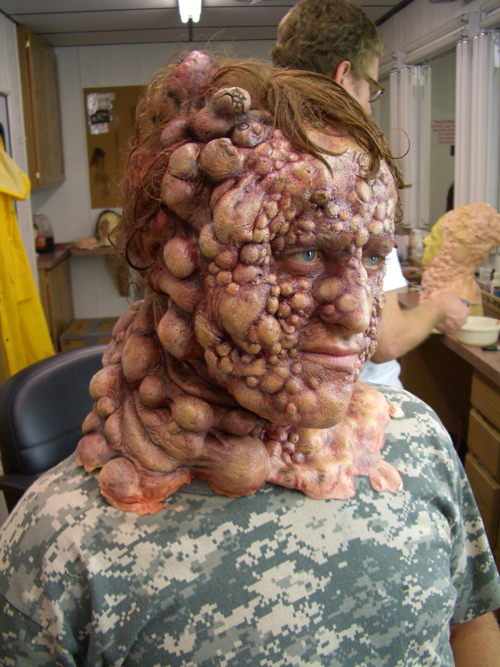
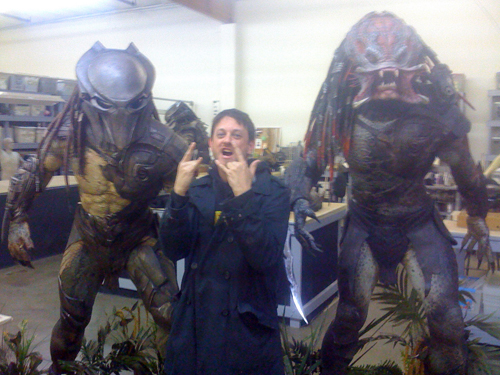
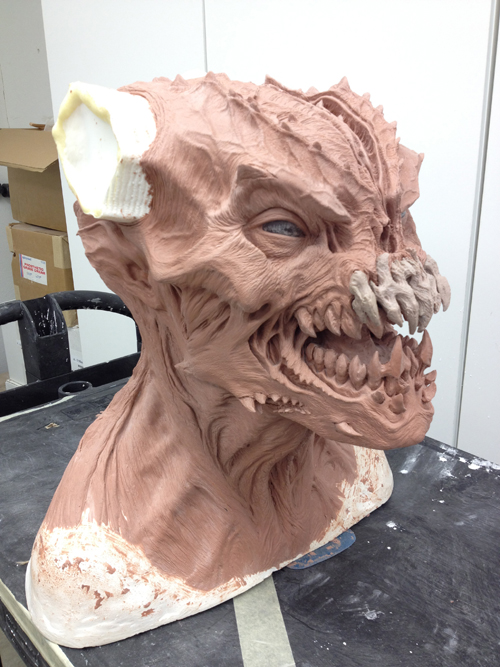
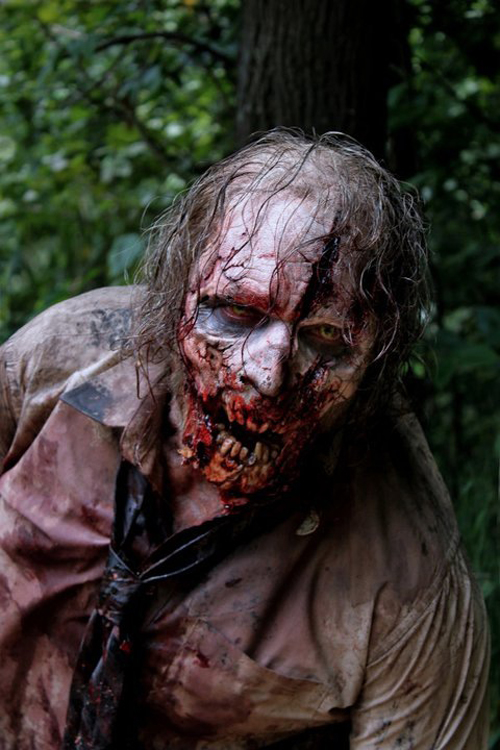
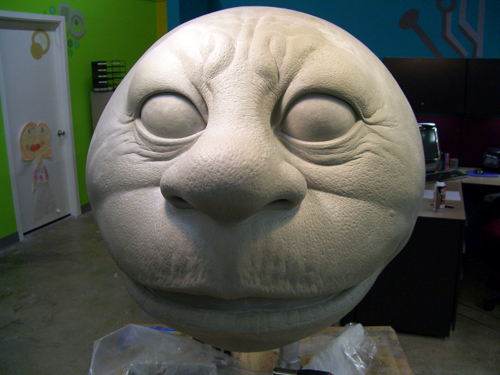
One thought on “Interview with Emmy-Award winning Special FX Artist Jaremy Aiello”
Comments are closed.


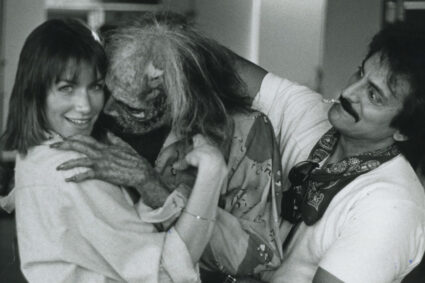
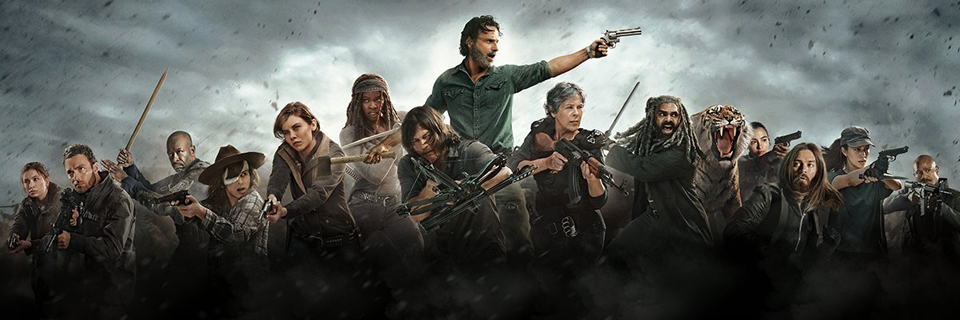
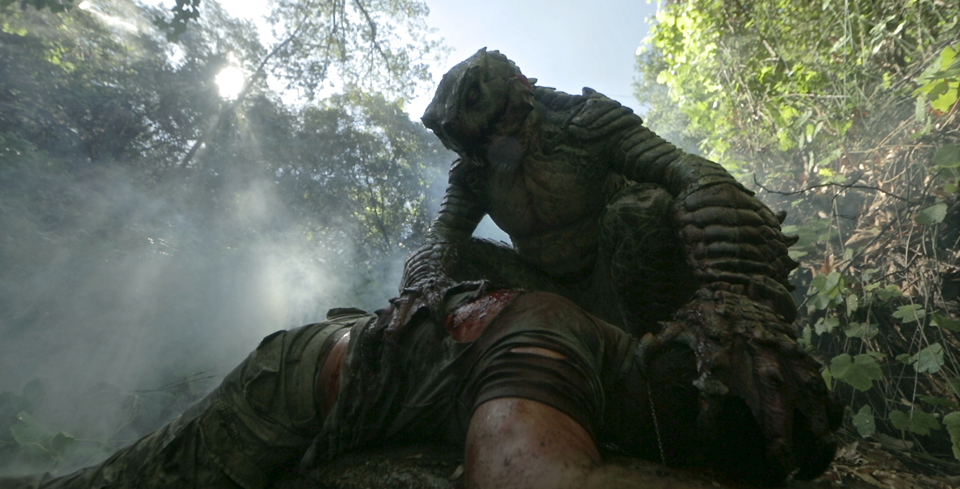
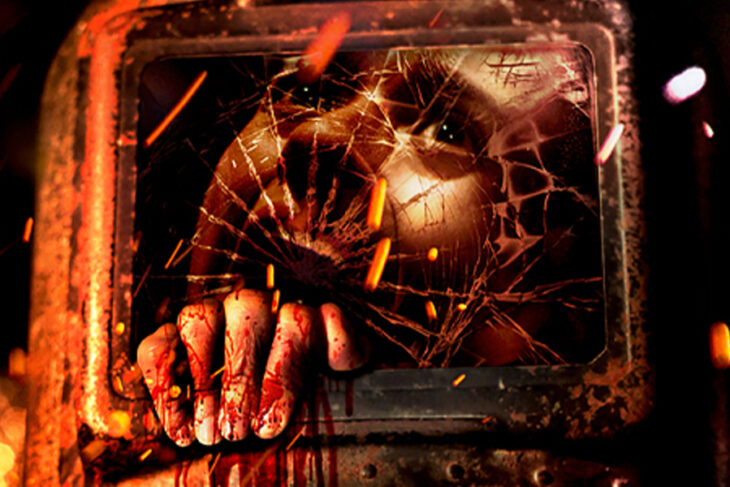
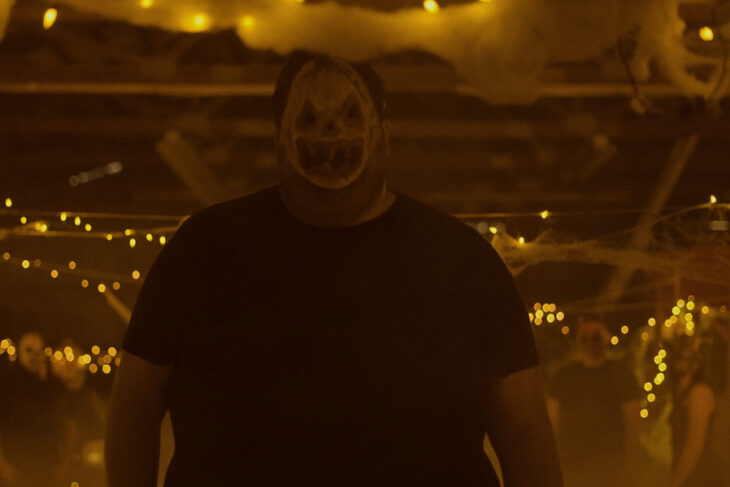
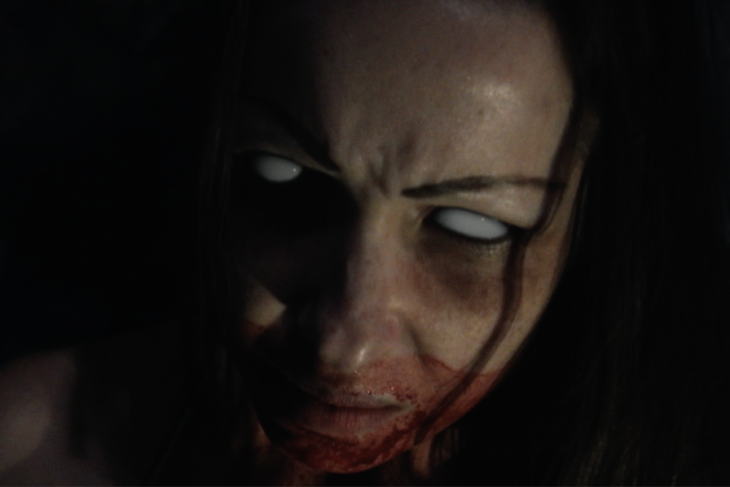
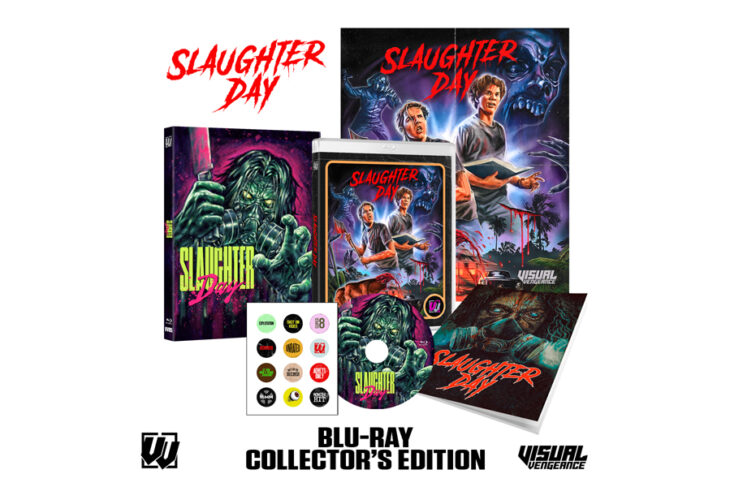
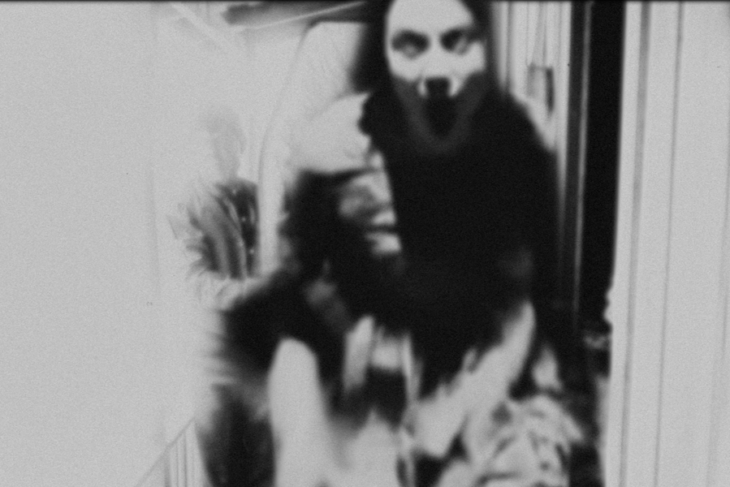
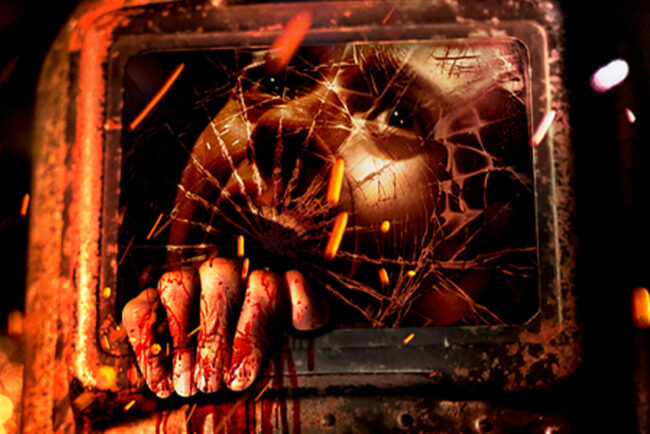
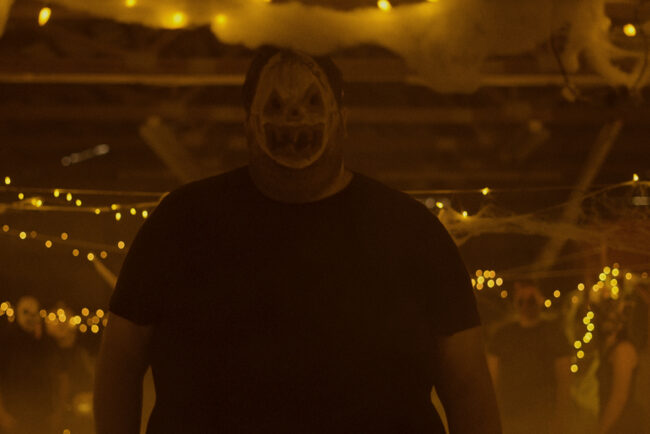
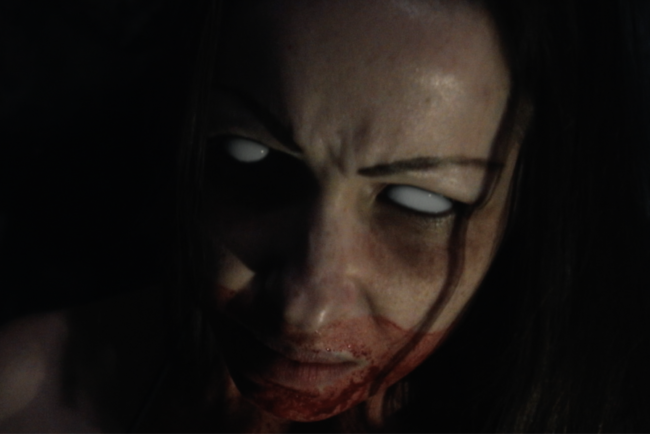
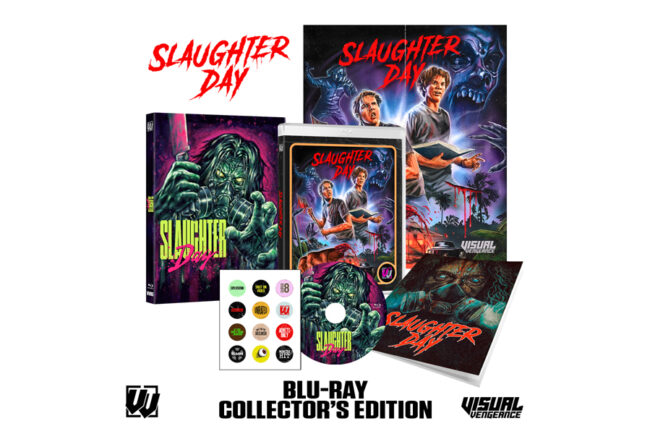
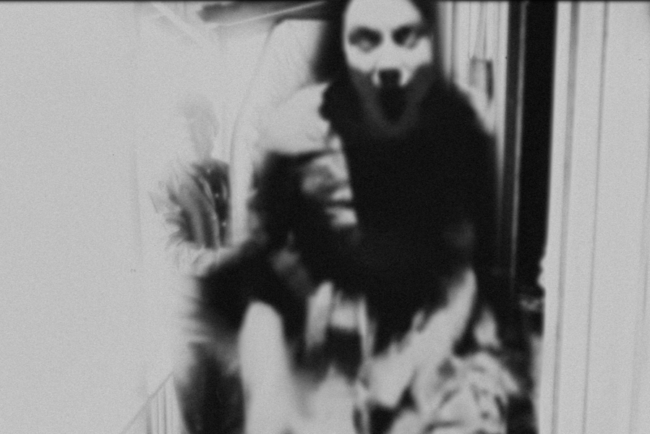
Great interview of a truly sincere wonderful person ,great to hear him talk about his roots in a honest way,and i’am fortunate to know Jaremy,